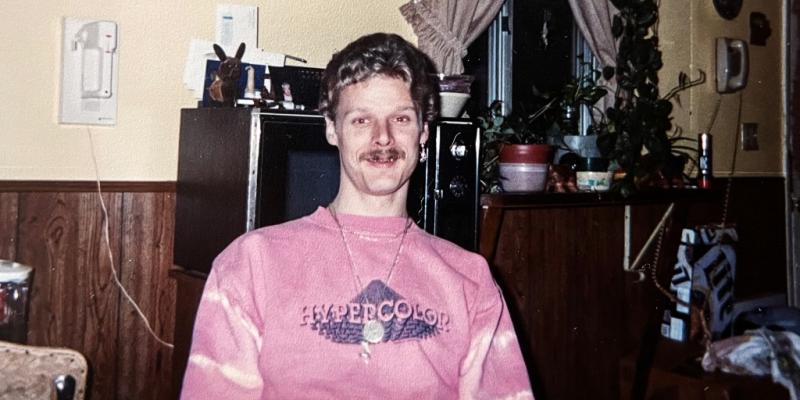30-year mystery solved: Missing man's remains among those found on suspected serial killer's estate



Allen Livingston's family searched for answers for more than 30 years after Livingston, then 27, disappeared in 1993. His mother always had a hunch that he had been murdered by suspected Indiana serial killer Herbert Baumeister. This week, his family finally got closure.
Livingston's DNA was matched to a sample from remains found on Baumeister's estate at Fox Hollow Farm, the Hamilton County Coroner's Office said.
Eight bodies were identified on the property when the case was opened in 1996, but DNA technology was not advanced enough to identify the other remains at the time.
"Hearing about Allen was a little roller coaster of feelings," said Eric Pranger, Livingston's cousin, who requested that the case be reopened last year. "We're happy because we got closure and we were able to identify him but sad because we had to relive it a bit."
Investigators believe Baumeister frequented gay bars to lure men to his home and kill them. He has been linked to the disappearance of at least 16 men since 1980. He killed himself at age 49 in July 1996 before investigators had a chance to question him,leaving families like Livingston's with no answers.
Pranger said Livingston's mother lost hope of finding her son over the years because every time she would call to check on his case, there was no new information. He said Sharon Livingston had always had a gut feeling that her son was at Fox Hollow Farms — a feeling Pranger called a "mother's intuition."
When the case was reopened, she submitted a DNA sample to the coroner's office. Last year, she told NBC affiliate WTHR of Indianapolis that the search for her son had become more urgent for her after she was diagnosed with cancer.
"I do not have my son's remains, and until I have that, it will be unfinished for me, and I hope I get them before I pass away," Sharon told WTHR last November.
She finally has those remains. Hamilton County Coroner Jeff Jellison called her Monday to let her know her son had been identified.
He said a leg bone from Allen Livingston was among 44 sets of remains in the first batch his team submitted for DNA testing.
"What are the odds that of our first identification from 10,000 pieces of bone would be to that family that made the initial call?" Jellison said.
Investigators still do not know how many people will be identified.
Krista Latham, a University of Indianapolis forensic anthropologist, helped determine which sets of remains had the best chance of producing a DNA profile to submit to the state police lab.
When the remains were recovered in 1996, DNA technology was expensive and far more rudimentary. It required a large volume of skeletal material, and tests were not as individualizing as they are today, Latham said. Her lab has been involved with the case since the initial excavation.
Today's DNA technology — which uses nuclear rather than mitochondrial DNA — is much more sensitive, and it can use very small samples of skeletal materials to generate very individualized profiles.
Allen Livingston disappeared in 1993.Courtesy Eric Pranger
"It's that increased sensitivity in the DNA technology that's really allowed for us to investigate skeletal material in a way that wasn't possible before," Latham said.
She said another part of the remains are difficult to identify even with today's technological capabilities, mostly because they were burned or crushed before recovery. Some are as small as a fingernail.
Four other DNA profiles were also identified in the same batch as Livingston's, but they cannot be matched to a missing person because of a lack of reference samples from family members.
Jellison, Latham and Pranger encourage other families who had loved ones go missing from the 1980s to the mid-'90s to provide samples.
"It'll keep your mind from wondering where your loved one really is," Pranger said. "Instead, you'll have solid proof that they've been found."
All the remains are being preserved in a temperature-controlled secure evidence room at the University of Indianapolis' Anthropology and Archaeology Department, where they have been for the past 27 years.
"This first identification is important, but what it taught us is that what we're doing is right," Jellison said. "Now it's time to get our nose back to the grindstone, because we know now that we can produce some results."




Knew a girl in Denver back in the 60s who was sleeping with all of my bandmates. Seems they were all having a good sexual orgy time together. She went missing and they found her torn up body on Lookout mountain after one of our gigs at Sams.
Quit that band soon after because they all looked guilty to me.
now that was a brutal drive home after a night of partying. seems like they were always dragging a wreck off that mountain.
I'm glad the family got closure. Must have been a slow form of torture never knowing for certain.
Morning.. hopefully a massive relief in away for the family, though dreading the news at the same time...
This is happening here as well now...some cold cases over 40 years old are finally been solved.. including one from my own home town..but the culprit has since fled and still on the run to this day....